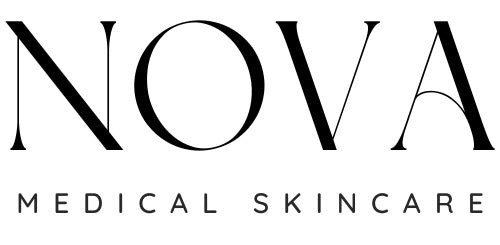Fractional Resurfacing is a highly effective, non-invasive treatment designed to improve the overall texture and tone of your skin. By using targeted laser technology, fractional resurfacing creates microscopic columns of treatment that penetrate the skin's surface, stimulating the body's natural healing response and promoting collagen production. This process helps reduce the appearance of fine lines, wrinkles, sun damage, acne scars, and other skin imperfections. The fractional approach allows for quicker healing and minimal downtime, as it leaves healthy tissue between treated areas, encouraging faster skin regeneration. Whether you're looking to smooth rough patches, fade pigmentation, or rejuvenate aging skin, fractional resurfacing offers a safe and proven solution for achieving a clearer, more youthful complexion. With minimal discomfort and long-lasting results, it's an ideal choice for those seeking smoother, more radiant skin without the need for extensive recovery time.
FAQ
1. What is Fractional Resurfacing?
Fractional resurfacing is a non-invasive laser treatment that uses targeted laser energy to create microscopic columns in the skin’s surface. This stimulates the body's natural healing process, encouraging collagen production and skin regeneration. The treatment helps improve skin texture, reduce wrinkles, and address issues such as acne scars, sun damage, and uneven pigmentation.
2. How does Fractional Resurfacing work?
During fractional resurfacing, a laser is used to target specific areas of the skin, creating tiny, controlled injuries or "microthermal zones." These micro-injuries promote collagen production and skin healing, helping to improve skin texture and tone. The surrounding untreated tissue helps speed up the recovery process, leading to minimal downtime.
3. What skin concerns can Fractional Resurfacing treat?
Fractional resurfacing is highly effective for a range of skin concerns, including:
Fine lines and wrinkles
Acne scars and other types of scarring
Sun damage and age spots
Uneven skin tone and texture
Enlarged pores
Stretch marks
4. Is Fractional Resurfacing safe?
Yes, fractional resurfacing is a safe and FDA-approved treatment when performed by a trained and experienced professional. The laser energy is precisely controlled, targeting specific skin layers while leaving surrounding healthy tissue intact to aid in faster healing.
5. Does Fractional Resurfacing hurt?
Most patients experience minimal discomfort during fractional resurfacing. The sensation is often described as a mild stinging or prickling feeling, similar to the sensation of a sunburn. Topical numbing creams are typically applied to ensure comfort during the procedure. After the treatment, any discomfort is usually mild and temporary.
6. How long does a Fractional Resurfacing treatment take?
A fractional resurfacing session usually takes between 20 to 45 minutes, depending on the size of the area being treated. The treatment is relatively quick, making it easy to fit into a busy schedule.
7. How many treatments will I need?
The number of treatments needed varies based on your skin concerns and goals. For optimal results, most patients require 3-5 treatments, spaced about 4-6 weeks apart. During your consultation, your provider will develop a customized treatment plan based on your specific skin needs.
8. When will I see results from Fractional Resurfacing?
Results from fractional resurfacing are gradual. While you may notice some improvement in texture and tone after your first treatment, full results typically develop over the course of several weeks as collagen is produced and the skin regenerates. Optimal results are usually visible after 2-3 months.
9. Is there any downtime after Fractional Resurfacing?
There is minimal downtime with fractional resurfacing. After the treatment, your skin may appear red and slightly swollen, similar to a mild sunburn, which typically subsides within 24-48 hours. Mild peeling or flaking may occur over the following days as the skin sheds its old surface, revealing a smoother complexion. Most people can return to normal activities within a few days.
10. Are there any side effects with Fractional Resurfacing?
Side effects are rare but may include redness, swelling, and mild peeling after the procedure. These effects usually resolve on their own within a few days. In rare cases, temporary hyperpigmentation or hypopigmentation (darkening or lightening of the skin) may occur but typically fades with time.
11. Can Fractional Resurfacing be used on all skin types?
Fractional resurfacing is suitable for most skin types, but it is especially beneficial for individuals with lighter to medium skin tones. For darker skin tones, additional care may be required to avoid pigmentation issues. Your provider will assess your skin type and recommend the best treatment approach for your needs.
12. How should I prepare for Fractional Resurfacing?
Preparation for fractional resurfacing is simple. Avoid sun exposure for at least 1-2 weeks before the treatment, as tanned or sunburned skin can be more sensitive to the laser. You may also be asked to avoid certain skin care products, such as retinoids or exfoliants, before your treatment. Your provider will give you specific pre-treatment instructions to ensure the best results.
13. How much does Fractional Resurfacing cost?
The cost of fractional resurfacing varies based on the area being treated and the number of sessions required. During your consultation, your provider will assess your skin concerns and provide a personalized treatment plan along with a cost estimate.
Please contact us if you have any other questions regarding this treatment and we are happy to assist.
